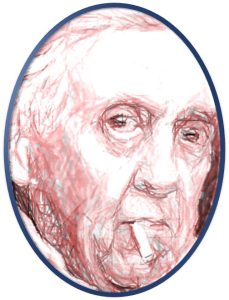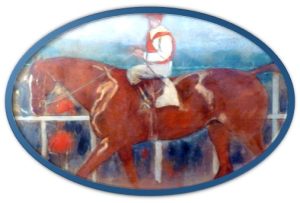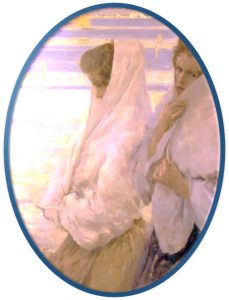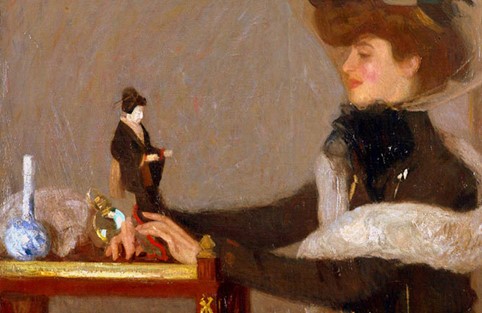


 The post-impressionist pictorial culture of Camillo Innocenti
The post-impressionist pictorial culture of Camillo Innocenti
Meeting Benches is a meeting and inspiration place dedicated to artists, thinkers and dreamers from all over the world. Here, where people can share art, stories and thoughts, virtual benches serve as a point of connection. If you’re an art enthusiast or simply curious to explore a world of inspiration and beauty, this is a digital destination not to be missed. The intellectual properties of the digital images that appear in this blog are to be reported to their authors. The sole purpose of this site is to spread knowledge of creative people, such as the Italian painter Camillo Innocenti. Type in painters if you want to know more.



 Camillo Innocenti, Italian painter, was born in Rome on 14 June 1871. He studied at high school, then entered the studios of Domenico Morelli in Naples and Antonio Mancini in Rome. His artistic training began with his high school studies, but his true passion for painting led him to apprentice with Ludovico Seitz, a painter and friend of his mother. During this period, Innocenti had the opportunity to closely study the great paintings of the past, from Raphael to Michelangelo. He completed his artistic studies at the Academy of Fine Arts in Rome. His painting was also inspired by the life of the modern woman, with paintings depicting everyday scenes such as playing the piano, pouring tea or styling her hair. He made numerous study trips abroad, including a stay in Paris from 1901 to 1903.
Camillo Innocenti, Italian painter, was born in Rome on 14 June 1871. He studied at high school, then entered the studios of Domenico Morelli in Naples and Antonio Mancini in Rome. His artistic training began with his high school studies, but his true passion for painting led him to apprentice with Ludovico Seitz, a painter and friend of his mother. During this period, Innocenti had the opportunity to closely study the great paintings of the past, from Raphael to Michelangelo. He completed his artistic studies at the Academy of Fine Arts in Rome. His painting was also inspired by the life of the modern woman, with paintings depicting everyday scenes such as playing the piano, pouring tea or styling her hair. He made numerous study trips abroad, including a stay in Paris from 1901 to 1903.



 He was appointed academician at the Accademia di San Luca. At the Venice Biennale in 1903 he exhibited his pointillist works (with attention to social themes). In 1903 he won the gold medal at the Saint Louis Universal Exposition with “Two Women“. His poetic sensitivity and attention to detail are evident in his works. In his early works, we note the influence of Italian painters of the second half of the 19th century, such as Morelli, Michetti and above all Antonio Mancini. After 1906, Camillo Innocenti began to concentrate on painting predominantly female figures. Returning to Italy, he painted landscapes of Abruzzo and Sardinia, and was part of the XXV group of the Roman countryside. By 1909, his popular subjects, barely counterbalanced by the iconography of the elegant and sophisticated woman—taken from a series of drawings published in 1906—had become the main theme of his artistic activity.
He was appointed academician at the Accademia di San Luca. At the Venice Biennale in 1903 he exhibited his pointillist works (with attention to social themes). In 1903 he won the gold medal at the Saint Louis Universal Exposition with “Two Women“. His poetic sensitivity and attention to detail are evident in his works. In his early works, we note the influence of Italian painters of the second half of the 19th century, such as Morelli, Michetti and above all Antonio Mancini. After 1906, Camillo Innocenti began to concentrate on painting predominantly female figures. Returning to Italy, he painted landscapes of Abruzzo and Sardinia, and was part of the XXV group of the Roman countryside. By 1909, his popular subjects, barely counterbalanced by the iconography of the elegant and sophisticated woman—taken from a series of drawings published in 1906—had become the main theme of his artistic activity.

 In 1915-18, as a second lieutenant, he took part in the First World War. Returning to Italy (after a stay in Spain), Camillo Innocenti encountered pointillism, which occupied him for a certain period. He painted local folk subjects from Abruzzo and Sardinia. After the First World War Camillo Innocenti was called to Cairo to take on the role of director of the Academy of Fine Arts. That long stay in Egypt relieved the inspiration and strength of his work. He developed a style that merged elements of naturalism and impressionism. His works often depicted rural landscapes, scenes of everyday life and human figures. He used bright colors and fluid brushstrokes to create evocative atmospheres. His painting is characterized by a poetic sensitivity and attention to detail.
In 1915-18, as a second lieutenant, he took part in the First World War. Returning to Italy (after a stay in Spain), Camillo Innocenti encountered pointillism, which occupied him for a certain period. He painted local folk subjects from Abruzzo and Sardinia. After the First World War Camillo Innocenti was called to Cairo to take on the role of director of the Academy of Fine Arts. That long stay in Egypt relieved the inspiration and strength of his work. He developed a style that merged elements of naturalism and impressionism. His works often depicted rural landscapes, scenes of everyday life and human figures. He used bright colors and fluid brushstrokes to create evocative atmospheres. His painting is characterized by a poetic sensitivity and attention to detail.

 The peak of his success came in 1910, when he was appreciated by high society and the international market. In 1940 he returned to Italy, but the historical and social changes brought about by the war had erased his world. Despite three personal exhibitions, he survived in difficult economic conditions. Camillo Innocenti interpreted the taste of the belle époque, illustrating its environments and social rites. You can admire his “The Green Shawl” at the Brooklyn Museum. Works by him can be found in several collections, including the National Gallery of Modern Art in Rome and the Municipal Art Gallery of Cagliari. Some of his works include “The Oath of Pontida,” “The Holidaymakers,” and “The Sultana.”
The peak of his success came in 1910, when he was appreciated by high society and the international market. In 1940 he returned to Italy, but the historical and social changes brought about by the war had erased his world. Despite three personal exhibitions, he survived in difficult economic conditions. Camillo Innocenti interpreted the taste of the belle époque, illustrating its environments and social rites. You can admire his “The Green Shawl” at the Brooklyn Museum. Works by him can be found in several collections, including the National Gallery of Modern Art in Rome and the Municipal Art Gallery of Cagliari. Some of his works include “The Oath of Pontida,” “The Holidaymakers,” and “The Sultana.”







